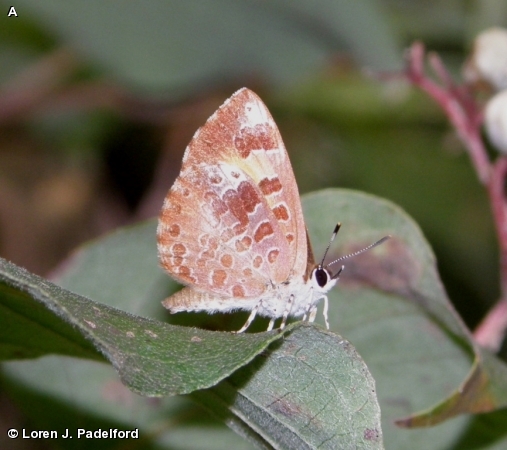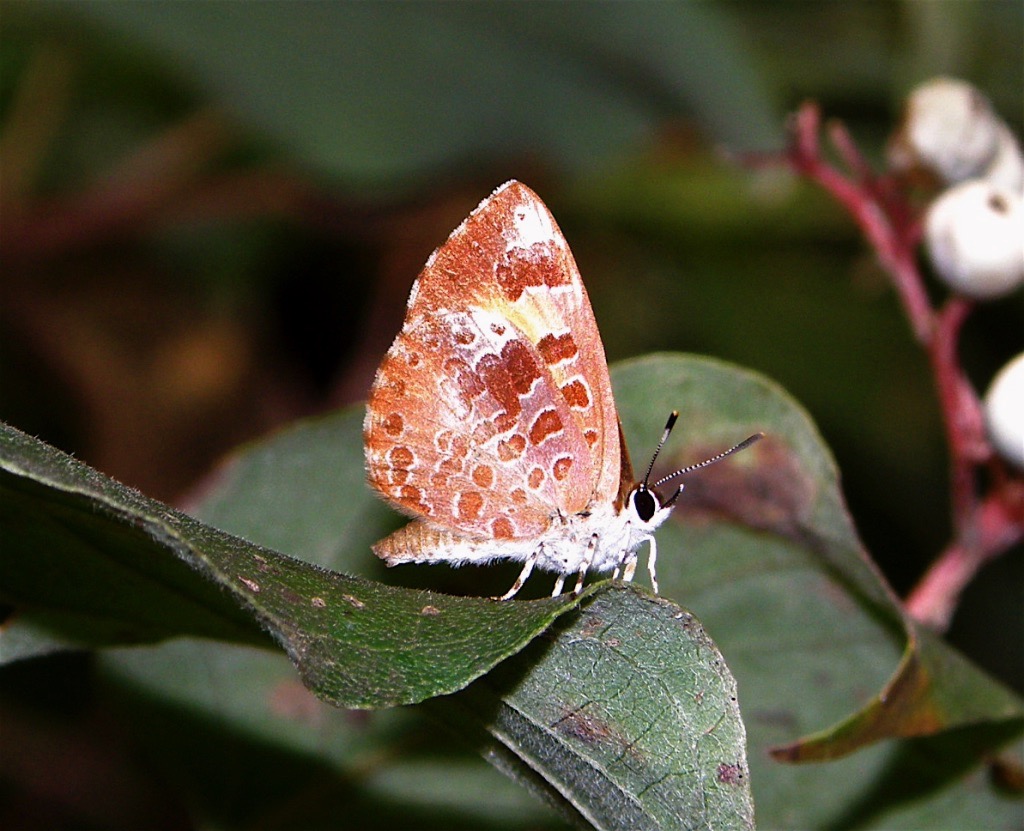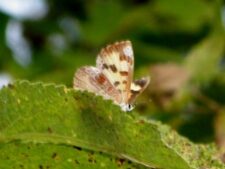
This small butterfly has a 1 1/8 to 1 1/4 inch wingspan. Dorsally, the forewing is orange with a thick black margin and a black slash mark and spots. The hindwing, dorsally, is mostly orange with black spots around the margin. Ventrally, the forewing has a thick reddish-brown margin and reddish-brown spots edged with white. The inner section of the wing is orange. The hindwing is reddish-brown with darker red circles edged with white. This butterfly almost always sits with the wings closed. When mature the greenish-brown larva is about 1/2 inch in length. It has medium-long tannish hairs. There is a thin, black middorsal stripe broken between segments and embedded in a broad, waxy white area that runs the length of the body. There is a white, toothed sub-dorsal stripe. It buries itself among dead aphids and becomes covered with sticky, whitish aphid secretions and debris which is caught in the body hair.
This uncommon butterfly is not seen every year. It is a slow flier and never strays far from the host aphids and their host plants. It is found in damp areas along forest trails. The males sit on vegetation in sunny openings.
The adult butterfly takes moisture from damp soil,dung and aphid honeydew. This is the only butterfly in North America whose larva is carnivorous and eats aphids. The larval stage is short, approximately 3 weeks, presumably because of the high protein content of the diet. The host aphids occur on alder, wild currant, hawthorn, ash, green briar and maple. The most common prey aphid species is the Woolly Alder Aphid (Paraprociphilus tessellatus).
Disclaimer: The content of NatureSearch is provided by dedicated volunteer Naturalists of Fontenelle Forest who strive to provide the most accurate information available. Contributors of the images retain their copyrights. The point of contact for this page is: Babs Padelford.




